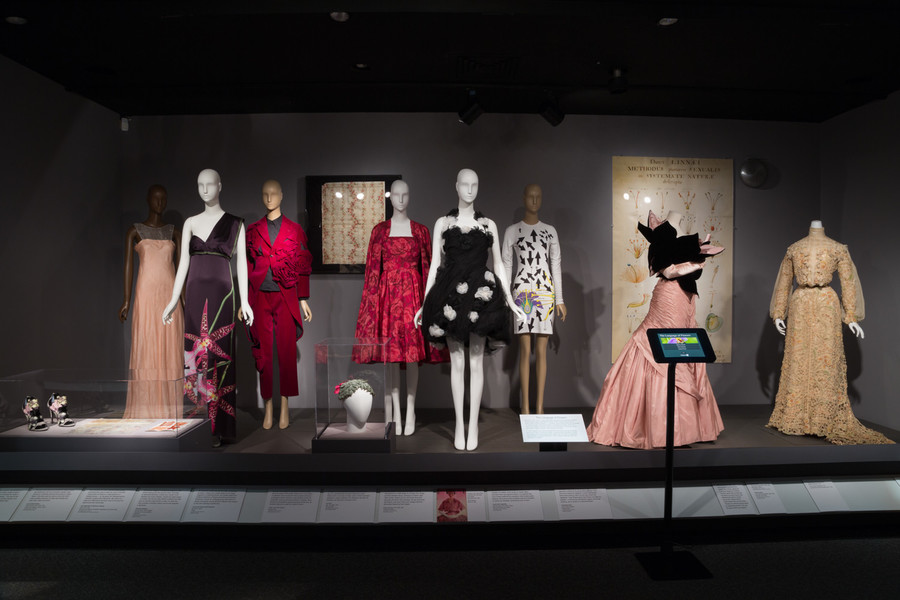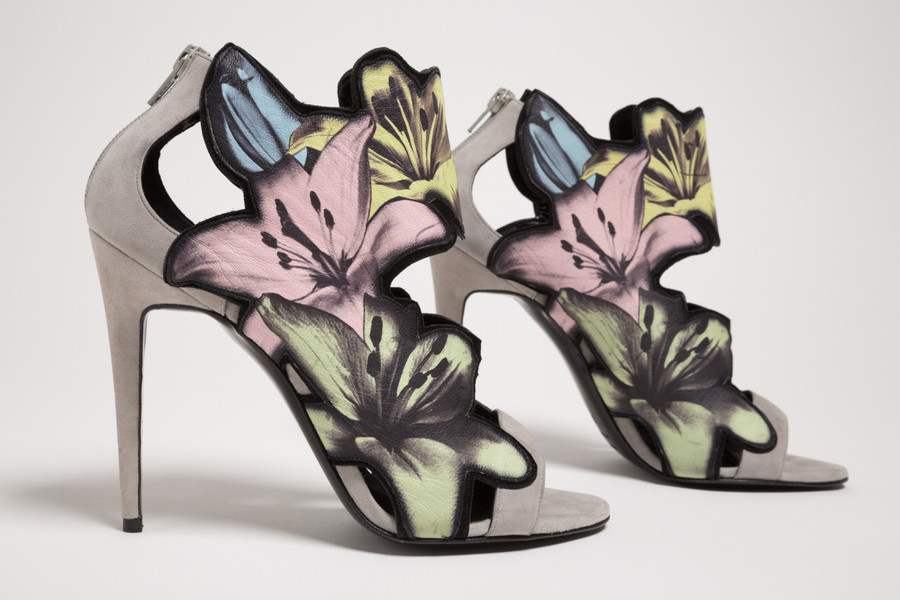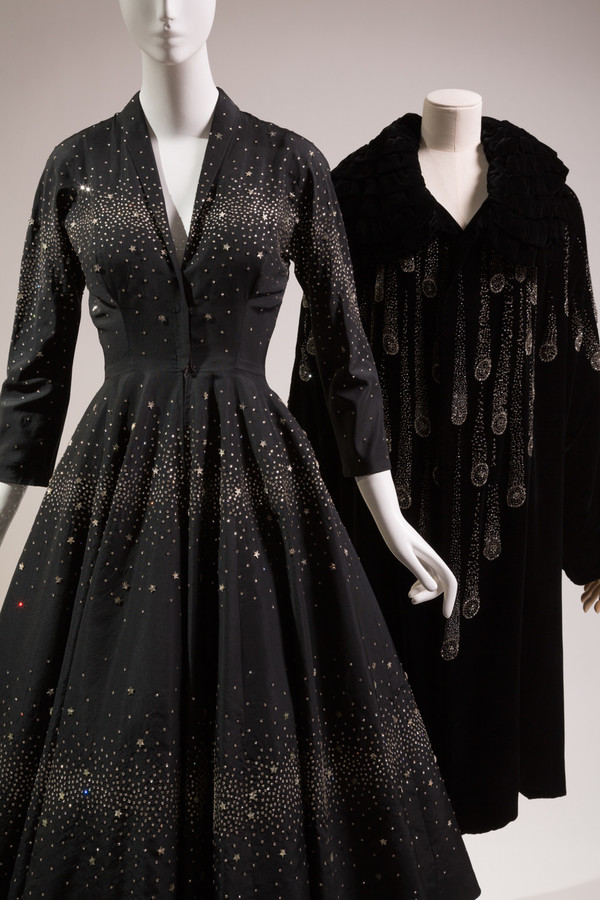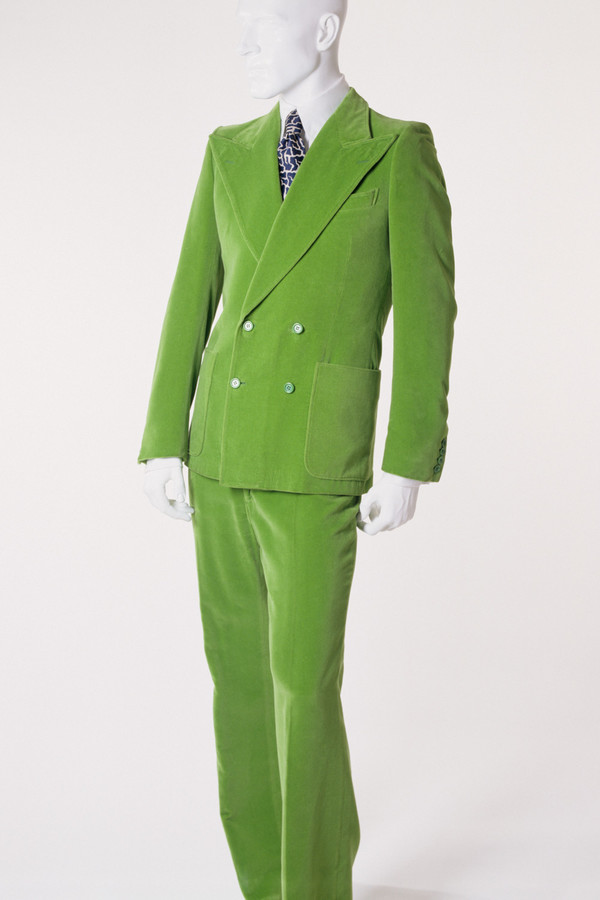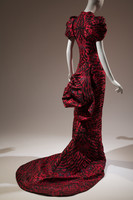Nature serves as fashion’s muse for garment exhibition
What do flowers, water and scientific theory have in common? They’ve all served as natural inspiration for fashion designers.
The Museum at Fashion Institute of Technology in Manhattan examines the relationship between the natural world and fashion in its 95-piece exhibition “Force of Nature,” which is showing until Nov. 18. Spanning from the 18th century to the present, one can see how animal prints sometimes serve as textile patterns, a floral motif adorns a garment, or how the flamboyant color of a man’s suit takes its cue from the law of animal attraction.
“Force of Nature also looks at how scientific theories and principles can be used to examine aspects of fashion,” said Melissa Marra, the museum’s associate curator of education. “Nature is omnipresent, it is the world around us, and as we explore that world and our place within it.”
For example, she said, there’s an entire section devoted to “The Science of Attraction,” looking at Charles Darwin’s theory of evolution — particularly his ideas about sexual selection — and examines these theories in relation to fashion design. In a similar vein, another section, “Physical Forces,” looks at how discoveries relating to celestial bodies, the greater universe, and the physical forces that created them have also led to extraordinary designs.
Some of Marra’s favorite pieces of the collection include a pair of “magnetic motion” shoes by Dutch designer Iris van Herpen. She made the pair by manipulating a number of materials.
“Iron fillings are mixed in with a resin that coats the surface of the shoe,” Marra said. “Then the designer takes large magnets and pulses them around the shoes to ‘grow’ these otherworldly spiky formations. The resulting shoe is a true synthesis of fashion, nature and technology.”
With its flower petal stole that transforms its wearer into a sensual flower, Marra said she also counted a gown by American designer Charles James as one her favorites. Additionally, there is a “striking” pheasant cape and headpiece from Bill Cunningham.
Cunningham, who died last year, was perhaps best known as a fashion photographer for The New York Times. He began his career as a milliner, Marra said — someone who makes or sells women’s hats.
Two dresses by British designer Alexander McQueen opened the exhibition. The artist, who died in 2010, used birds as inspiration throughout his years in the fashion industry. One garment “evokes the magnificent plumage of a Scarlet macaw,” Marra said.
Part of the show delves into the theory of evolution and idea of sexual attraction through male and female dress. A suit by French clothing designer Yves Saint Laurent from around 1972 uses bright color, highlighting the 1960s Peacock Revolution. It was a period that opened the door of acceptance for men to wear untraditional hues like lime green.
The inspiration, Marra said, followed the idea of an animal like the male peacock as the flamboyantly garbed person who would garner the attention.
Animal print creations by Austrian-born fashion designer Rudi Gernreich explore the idea of clothes serving as a second skin, Marra said, blurring the line between human and animals.
“The Language of Flowers” section of “Force of Nature” explores the sexuality of plants and symbolism of flowers like roses and orchids.
The interactive portion of the show uses iPads to further enhance the experience. Visitors can learn even more about the connection between fashion, scientific theory and nature by accessing the information through a specially designed website, which can be viewed on computers and mobile devices.
“I wanted to provide an opportunity for viewers to learn more about some of the ideas, concepts and people introduced in the exhibition without overwhelming the visitor,” Marra said.
The inspiration for the show came from Marra’s husband, who she described as a “nature enthusiast” interested in the life sciences.
“He would often accompany me to fashion exhibitions, and while I was marveling at the clothes on display, he would be there pointing out all these unexpected nature references, or identifying the species depicted in various animal prints,” Marra said. “We are so used to thinking of nature and fashion expressed in terms of floral motifs and animal prints. But really, there is so much more to it.”
One of the things Marra hopes visitors leave the exhibition discovering is “seeing vast ways in which nature informs design” and “people will see how closely related science and the arts are.”
“Both seek to express the world we live in,” Marra said. “And fashion is no different.”

